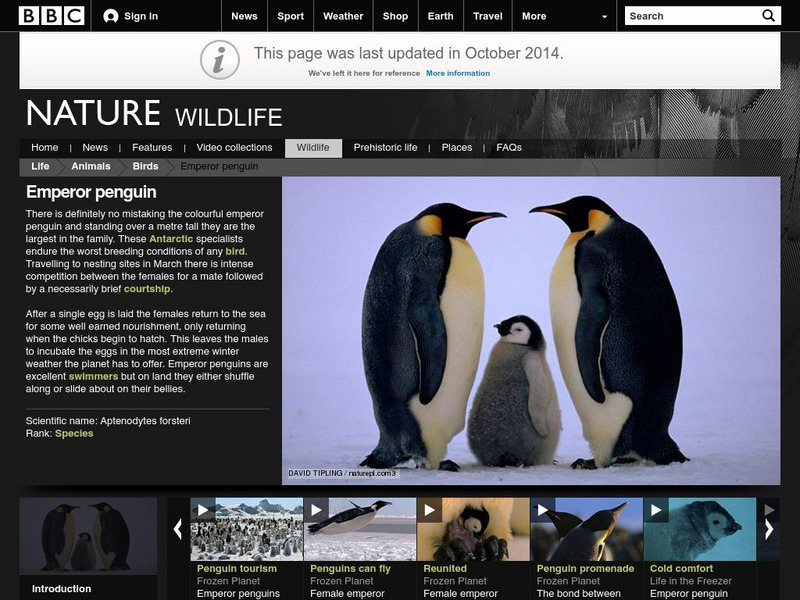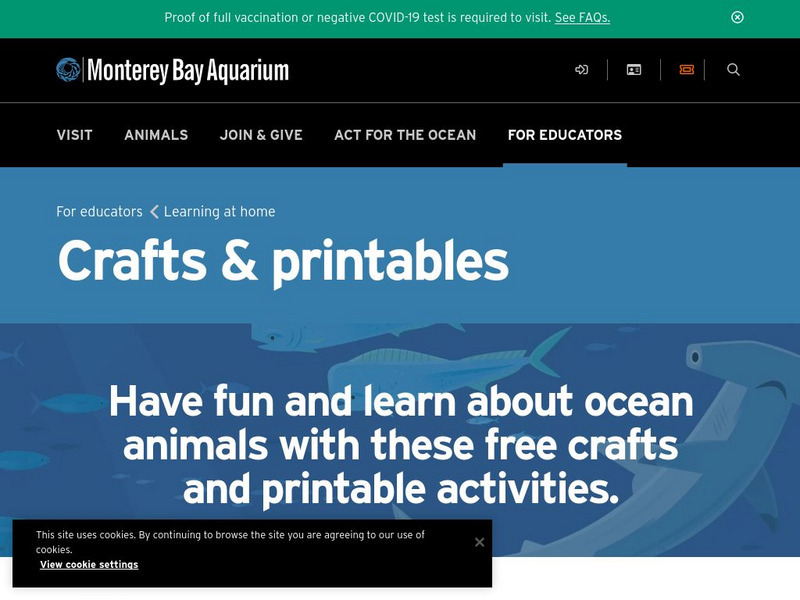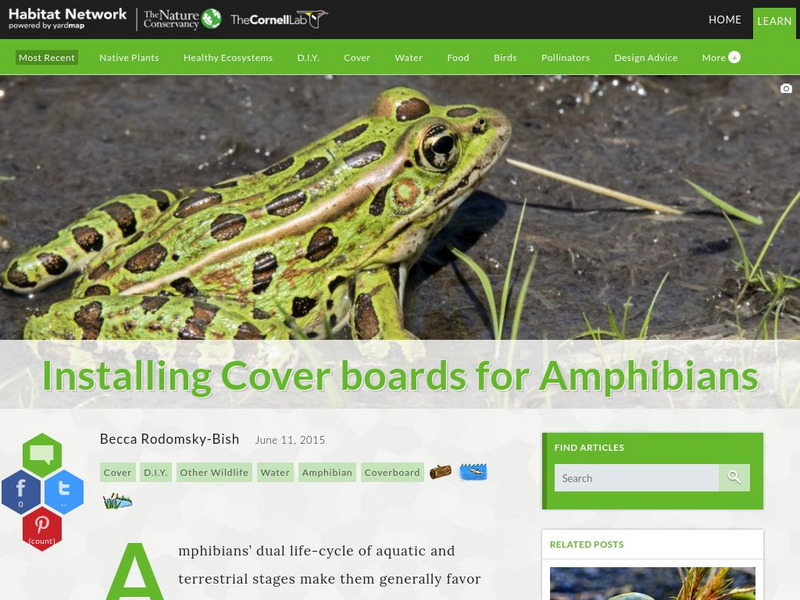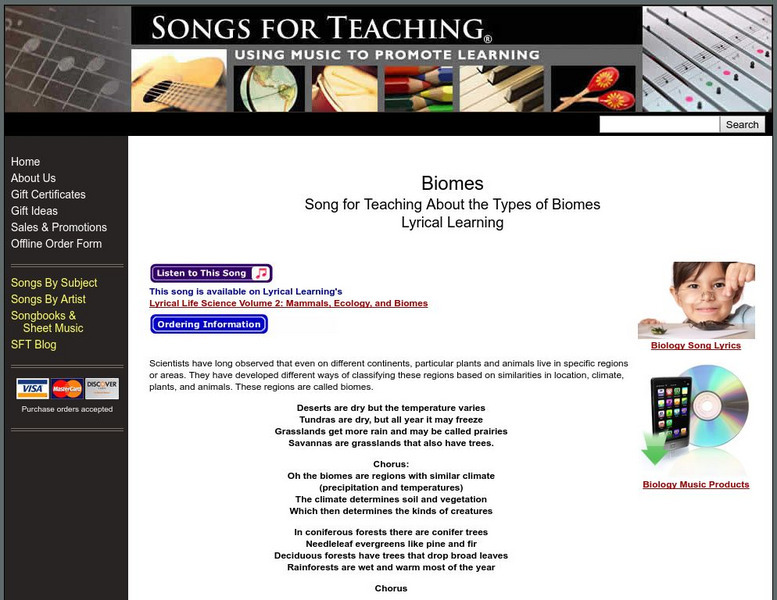ClassFlow
Class Flow: Biomes of the World
[Free Registration/Login Required] This flipchart contains a Life Science lesson for students in grades 7-8. It was specifically designed to assist ESL students read, pronounce, and understand the meanings of key concepts presented in...
Ducksters
Ducksters: Science for Kids: World Biomes and Ecosystems
Kids learn about the world's biomes and ecosystems. The network of life and biodiversity needed for all to survive.
Alabama Learning Exchange
Alex: Pretty Cool Penguins
This instructional activity is part of an interdisciplinary primary life science unit addressing adaptation and habitats by focusing on penguins. This instructional activity is primarily technology based and should take place near the...
American Institute of Biological Sciences
Action Bioscience: Species, Speciation and the Environment
The American Institute of Biological Sciences offers this article by Niles Eldredge, evolutionary theorist and curator at the American Museum of Natural History. Eldredge begins with Darwin's theories and summarizes subsequent thought,...
BBC
Bbc Science & Nature: Reindeer
The BBC provides this photo-illustrated fact sheet about the Reindeer. Once found throughout the northern latitudes, these animals are now only found in herds in Alaska, Canada, Scandinavia and Russia.
BBC
Bbc Science & Nature: Emperor Penguin
BBC Wildlife profiles the largest penguin species, the Emperor penguin of Antarctica, with facts and photographs.
Friends of Algonquin Park
The Science Behind Algonquin's Animals: Painted Turtle
Excellent information is provided on the painted turtle's appearance, weight, migration, food sources, predators and breeding. Research questions provide the answers to many common questions such as how long they live.
Other
Baltimore Co. Public Schools: Chesapeake Bay Food Webs (Online Research Model)
Food webs lesson, which focuses on Chesapeake Bay habitats, integrates biological concepts with literacy knowledge and skills. Lesson directs students to answer the question, how does a human-caused stress placed on the environment...
Other
Canadian Arctic Profiles
Detailed sections providing further information on the Canadian Arctic's exploration, climate, maps, migration, and indigenous people, make this resource useful for many topics. Put together with images, this resource is useful for high...
ClassFlow
Class Flow: Energy in Ecosystems Habitat
[Free Registration/Login Required] This flipchart discusses the habitats in ecosystems.
The Franklin Institute
The Franklin Institute: Treasures at Sea
Learn about ocean systems and habitats. Lots of reading, writing, games, and interactive activities. Colorful and fun.
PBS
Pbs Learning Media: Wild Kratts
Wild Kratts joins the adventures of Chris and Martin Kratt as they encounter incredible wild animals, combining science education with fun and adventure as the duo travels to animal habitats around the globe. Each adventure explores an...
Monterey Bay Aquarium
Monterey Bay Aquarium: Kelp Forest Crossword
Find a printable crossword puzzles on the topic of kelp forests designed to reinforce specific academic language associated with kelp forest habitats, such as holdfast, plankton, and adaptation. Includes links to other resources,...
Cornell Lab of Ornithology
Habitat Network: Installing Cover Boards for Amphibians
Find out how to make a cover board for Amphibians' dual life-cycle of aquatic and terrestrial stages.
Huntington Library
Huntington Library: Learning From Leaves: From Observation to Inference [Pdf]
A lesson plan in which students explore plants from three different ecosystems and make inferences about plant structures and their environments. Includes discussion questions, a vocabulary glossary, and handouts.
PBS
Pbs Learning Media: Biome in a Baggie
This ZOOMSci video segment shows how to create self-contained environments and explore how plants grow under different conditions. [3:24]
Kidport
Some Animals Live in Rock Caves
This site has brief illustrations and sample locations as to where the tiger, the bear, the moray eel and bat live.
Songs for Teaching
Songs for Teaching: Types of Biomes
Doug Eldon performs this great song which tells about the different biomes and their characteristics. Great way to begin your unit on the biomes.















